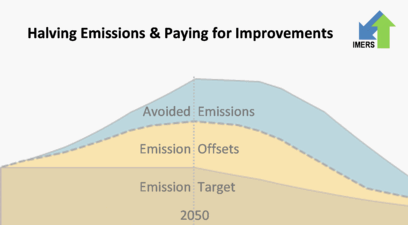IMERS is an initiative and proposal to establish an ...
International Maritime Emission Reduction Scheme
under the governance of IMO (International Maritime Organisation) with an ambitious goal to halve shipping emissions over long-term.

- It is based on a vision of Dr Andre Stochniol to create a lowest cost scheme to reduce greenhouse gas (GHG) emissions from international mariritme transport by a market mechanism combining:
 Near-term emission mitigation, including purchasing of emission credits
Near-term emission mitigation, including purchasing of emission credits
 Technology fund focused on bringing forward technology breakthroughs, such as hydrogen travel
Technology fund focused on bringing forward technology breakthroughs, such as hydrogen travel
 Funding for adaptation to climate change in developing countries.
Funding for adaptation to climate change in developing countries.
 The differentiated approach to climate change for developing countries is achieved at the point of distribution of funds by providing very significant contributory funding to climate change adaptation in these countries (about $2bn - $4bn annually, depending on the emission goal).
The differentiated approach to climate change for developing countries is achieved at the point of distribution of funds by providing very significant contributory funding to climate change adaptation in these countries (about $2bn - $4bn annually, depending on the emission goal).